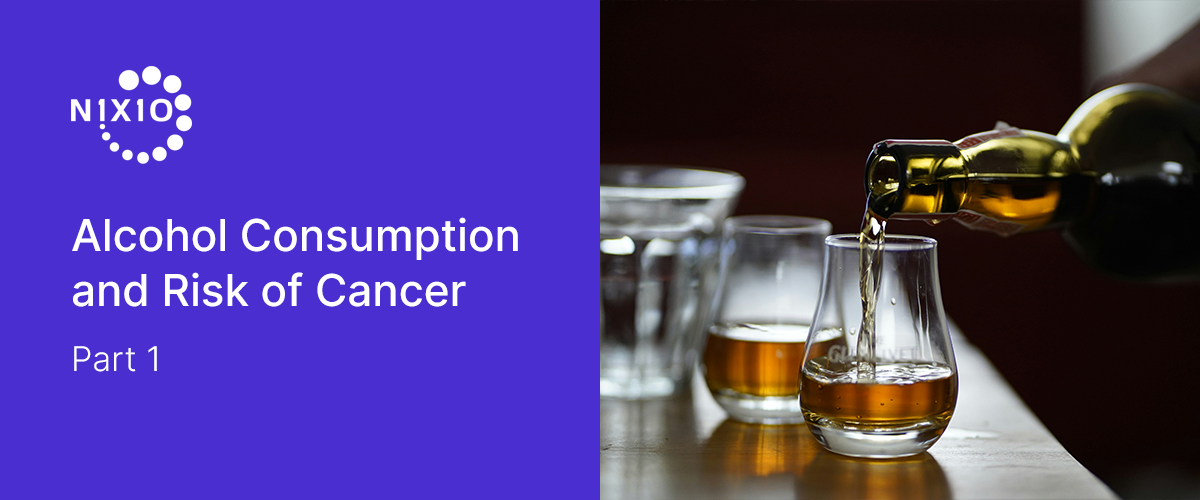The National Institutes of Health (NIH) and the American Society of Clinical Oncology (ASCO) report that drinking alcohol increases the risk of head and neck, esophagus, liver, stomach, colorectal, and breast cancer. There is also evidence that alcohol consumption is associated with increased risks of melanoma and of prostate and pancreatic cancers.
In a 2024 report, the American Association for Cancer Research (AACR) identified alcohol as a potential explanation for statistics indicating an increase in breast cancer and colorectal cancer among younger adults. The risks are greatest in those with heavy and long-term alcohol use. Even so, moderate drinking can add up over a lifetime, which could be harmful. According to the NIH, about 5.5% of all new cancer diagnoses and 5.8% of all deaths from cancer are attributed to drinking alcohol.
The Center for Disease Control and Prevention (CDC) describes heavy drinking as having more than eight drinks per week for women and more than 15 drinks per week for men. Binge drinking refers to consuming multiple drinks on a single occasion – four or more drinks for women and five or more drinks for men. A drink is defined as approximately 0.6 fluid ounces of alcohol. However, not all “drinks” are equal. It may be tempting to think that whatever fits in a glass counts as one drink. However, a standard drink looks different depending on what type of alcohol you are drinking. It’s important to know your serving sizes. The following counts as one drink: 12 fluid ounces of beer, 5 fluid ounces of wine, 1.5 fluid ounces of 80-proof liquor.
For patients undergoing chemotherapy, alcohol can worsen its side effects, including nausea, dehydration and mouth sores. Additionally, cancer patients who abuse alcohol do worse because alcohol causes poorer nutrition, a suppressed immune system, and a weaker heart. It may also increase the risk of additional cancer diagnoses. Heavy drinking is also risky for those individuals who have had a history of cancer. Among all cancer survivors, heavy drinking caused an 8% increased risk in dying and a 17% increased risk of cancer recurrence.
A person’s risk of alcohol-related cancers is influenced by their genes, specifically the genes that encode enzymes involved in metabolizing alcohol. The body metabolizes alcohol through the activity of the enzyme alcohol dehydrogenase, or ADH, which converts ethanol into the carcinogenic metabolite acetaldehyde, mainly in the liver. Recent evidence suggests that acetaldehyde production also occurs in the oral cavity and may be influenced by factors such as the oral microbiome. Another enzyme, called aldehyde dehydrogenase 2 (ALDH2), metabolizes toxic acetaldehyde to nontoxic substances. Some people, particularly those of East Asian descent, carry a variant of the gene for ALDH2 that encodes a defective form of the enzyme. In people who produce the defective enzyme, acetaldehyde builds up when they drink alcohol. The accumulation of acetaldehyde has such unpleasant effects (including facial flushing and heart palpitations) that most people who have inherited the ALDH2 variant are unable to consume large amounts of alcohol and therefore have a low risk of developing alcohol-related cancers.
However, some individuals with the defective form of ALDH2 can become tolerant to the unpleasant effects of acetaldehyde and consume large amounts of alcohol. Epidemiologic studies have shown that such individuals have a higher risk of alcohol-related esophageal cancer, as well as of head and neck cancers, than individuals with the fully active enzyme who drink comparable amounts of alcohol. These increased risks are seen only among people who carry the ALDH2 variant and drink alcohol—they are not observed in people who carry the variant but do not drink alcohol.


